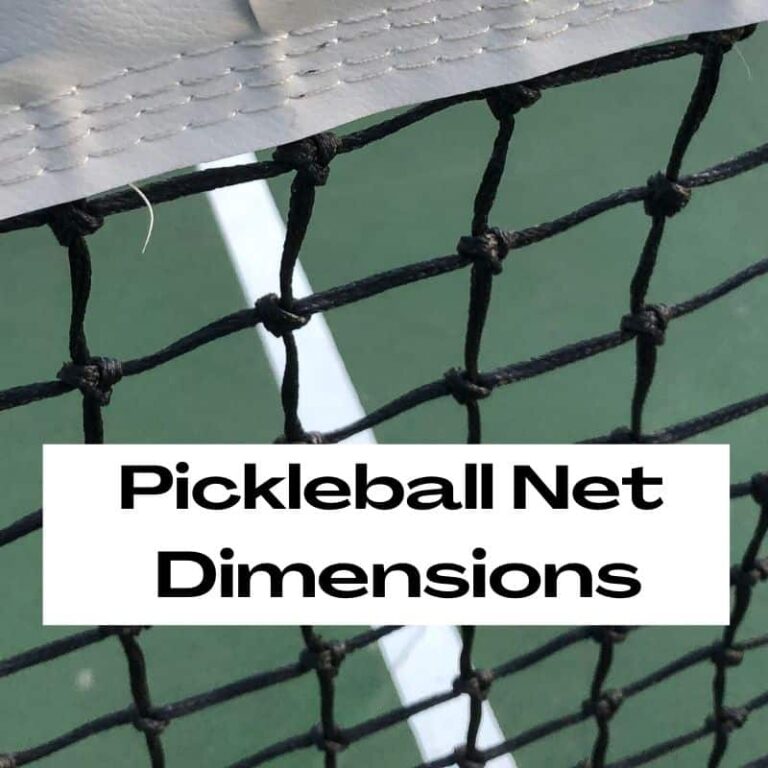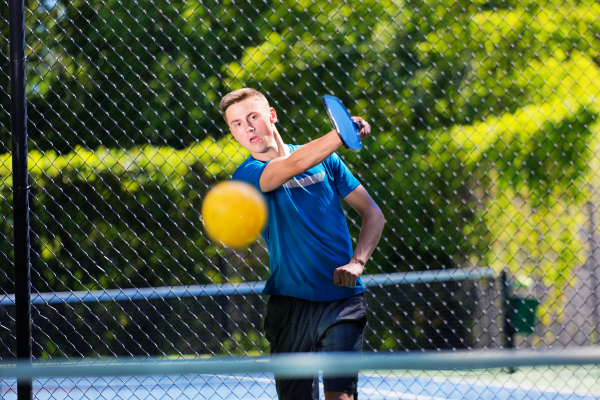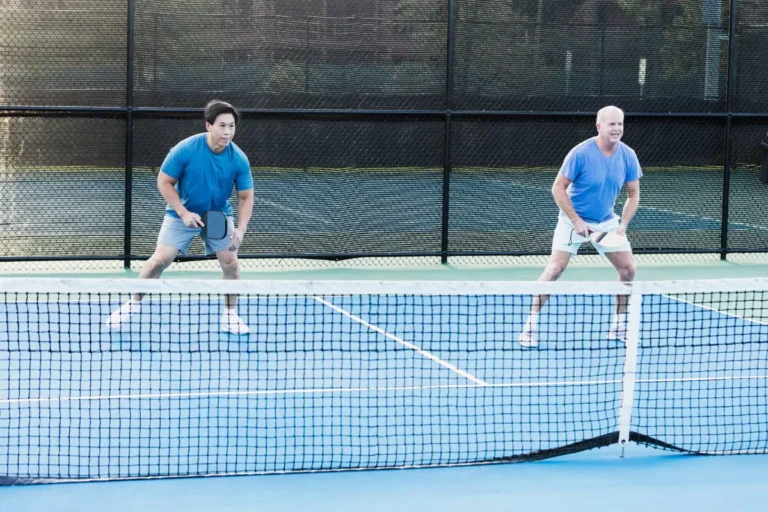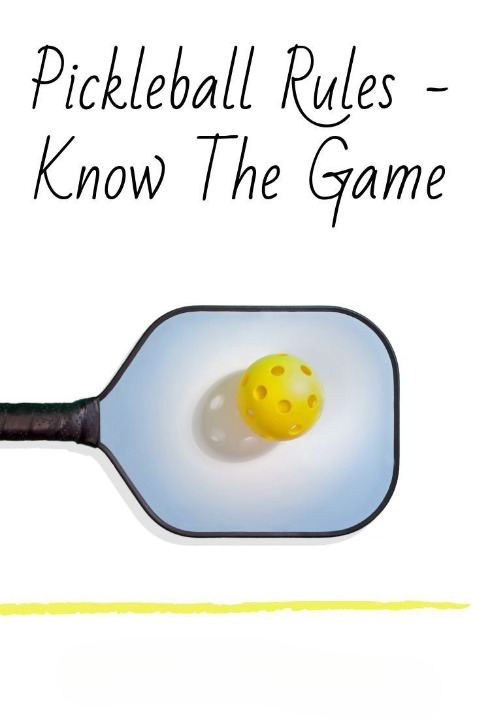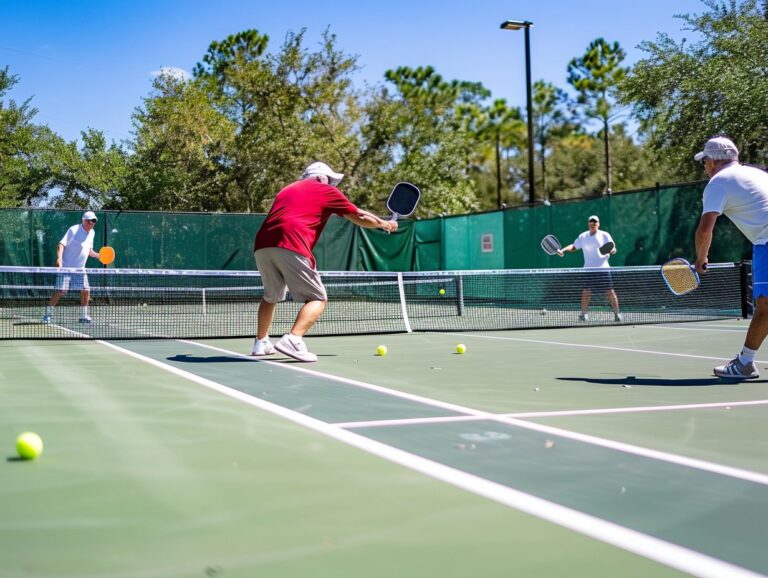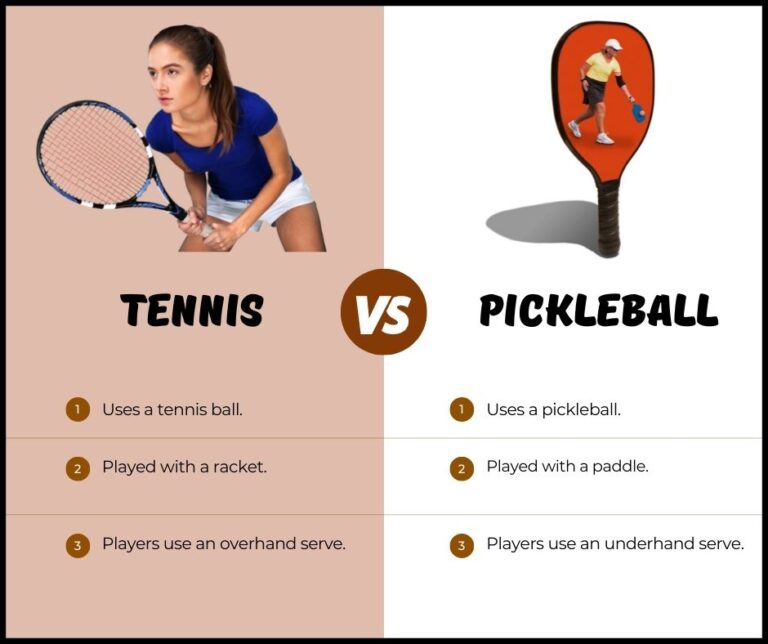What Is the Game Called Pickleball? The Ultimate Guide to the Fun Paddle Sport
What Is the Game Called Pickleball?
The game called pickleball is a fun and exciting paddle sport that combines elements of tennis, badminton, and table tennis. It is played on a smaller court with a lower net, using solid paddles and a perforated plastic ball. The objective is to score points by hitting the ball over the net and preventing your opponent from returning it. Pickleball is easy to learn, suitable for all ages and skill levels, and provides a great workout while fostering social interaction and friendly competition
Key Takeaways
- Pickleball is a fun, easy-to-learn paddle sport that combines elements of tennis, badminton, and table tennis.
- The game is played on a 44′ x 20′ court with a 36″ high net, using solid paddles and perforated plastic balls.
- Pickleballs are typically made of durable polypropylene plastic and feature a symmetrical hole pattern for consistent bounce and flight.
- Pickleball can be played indoors or outdoors, with slight variations in ball size and design to accommodate different playing conditions.
- The sport offers numerous physical, mental, and social benefits, making it accessible and enjoyable for people of all ages and skill levels.
- Pickleball communities and facilities are growing rapidly across the country, making it easier than ever to find opportunities to play and connect with other enthusiasts.
Whether you’re a seasoned athlete or a complete beginner, pickleball is a sport that offers endless opportunities for fun, fitness, and friendship. So grab a paddle, find a court, and get ready to experience the joy of this exciting and addictive game!
What Is Pickleball? A Mix of Familiar Sports
Pickleball is a unique blend of three popular racquet sports: badminton, tennis, and table tennis. It’s played on a court that’s similar in size to a badminton court, with a net that’s slightly lower than a tennis net. Players use solid paddles, which resemble oversized ping pong paddles, to hit a lightweight, perforated plastic ball back and forth over the net.
The game is played in singles or doubles, with the objective being to score points by making the ball bounce on your opponent’s side of the court without them returning it. The first team or player to reach 11 points (with a lead of at least two points) wins the game.
The History of Pickleball
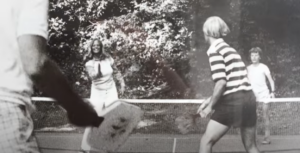
Pickleball was invented in 1965 by three fathers on Bainbridge Island, Washington: Joel Pritchard, Bill Bell, and Barney McCallum. The story goes that they were looking for a way to entertain their families during the summer and came up with the idea of combining elements of badminton, tennis, and ping pong.
The name “pickleball” has two possible origins:
- It was named after the Pritchards’ dog, Pickles, who would chase after the ball during early games.
- It refers to the “pickle boat” in crew, which is the last boat to finish a race and often has a mismatched crew.
From its humble beginnings, pickleball has grown exponentially in popularity, particularly among older adults and retirees. According to the Sports & Fitness Industry Association, pickleball participation grew by 21.3% between 2019 and 2020, with over 4.2 million players in the United States alone.
Gameplay Basics: Getting Your Pickle On
To start a game of pickleball, the serving team must make an underhand serve diagonally across the court. The ball must clear the net and land in the opponent’s service court. The receiving team must let the ball bounce once before returning it, and the serving team must also let the return bounce before playing it back. This is known as the “double bounce rule.”
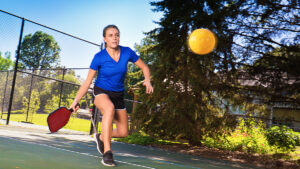
After the initial two bounces, players can either volley the ball (hit it before it bounces) or let it bounce once before returning it. Points can only be scored by the serving team, and if the serving team commits a fault, the serve is lost and the other team gets to serve.
Here’s a quick overview of the basic rules:
- Games are played to 11 points, with a win by 2 points
- Serves must be made underhand and diagonally across the court
- The serve and return must bounce once on each side before volleys are allowed
- Only the serving team can score points
- Teams switch sides of the court after each game, and in the third game (if played), teams switch sides when the first team reaches 6 points
Is Pickleball Easy to Learn?
One of the reasons pickleball has gained so much popularity is because it’s relatively easy to learn compared to other racquet sports. The larger paddles and underhand serve make it more accessible for beginners, and the lower net height (34 inches at the center) allows for longer rallies and more enjoyable gameplay.
That being said, don’t be fooled into thinking pickleball is a walk in the park! As players advance, the game can become quite competitive and require a great deal of skill, strategy, and finesse.
Here are some tips for beginners looking to improve their pickleball game:
- Focus on consistency over power
- Keep your paddle up and ready for the next shot
- Communicate with your partner in doubles play
- Practice your dinks (soft shots hit near the net) and volleys
- Stay active and light on your feet
The Anatomy of a Pickleball
Now, let’s talk about the star of the show: the pickleball itself. Pickleballs are lightweight, perforated plastic balls that are designed to be durable and easy to play with. But what exactly are they made of, and how do they affect gameplay?
Size and Weight Specifications
According to the USA Pickleball Association (USAPA), the official dimensions of a pickleball are as follows:
| Specification | Measurement |
|---|---|
| Diameter | 2.87 to 2.97 inches (7.29 to 7.54 cm) |
| Height | 1.25 to 1.50 inches (3.18 to 3.81 cm) |
| Weight | 0.78 to 0.935 ounces (22.1 to 26.5 grams) |
These specifications ensure that all pickleballs used in official play meet a consistent standard for size, weight, and performance.
Core Materials
The most common material used for pickleball cores is high-impact plastic, specifically polypropylene (PP). PP is a durable, lightweight, and affordable plastic that’s resistant to cracking and able to withstand the rigors of regular play.
Some pickleballs may feature other core materials, such as:
- Rubber
- Foam
- Polyethylene (PE)
- Polyurethane (PU)
However, these materials are less common and typically used for training or recreational purposes.
Hole Pattern
One of the most distinctive features of a pickleball is its hole pattern. The holes serve two primary purposes: to reduce wind resistance and to create a consistent bounce.
Pickleballs typically have between 26 and 40 circular holes, arranged in a symmetrical pattern across the surface of the ball. The number and arrangement of holes can vary between brands and models, but they all serve to create a ball that’s easy to control and fun to play with.
Here are some examples of common hole patterns:
- 26-hole pattern: Used by Dura and other brands for outdoor play
- 40-hole pattern: Used by Onix and other brands for indoor play
- Precision-drilled holes: Used by some high-end brands for optimal performance
Surface Texture
The surface texture of a pickleball can also vary, with some balls featuring a smooth surface and others having a slightly textured or dimpled surface. The texture of the ball can affect its grip and spin, with textured balls generally providing more grip and allowing for more spin on shots.
Some common surface textures include:
- Smooth: Provides a consistent bounce and less spin
- Textured: Offers more grip and spin potential
- Dimpled: Similar to a golf ball, dimples can help reduce drag and increase lift
Indoor vs. Outdoor Pickleballs
It’s worth noting that there are slight differences between indoor and outdoor pickleballs. Indoor balls typically have larger holes to allow for better visibility and slower play, while outdoor balls have smaller holes to provide better wind resistance and faster play.
When choosing a pickleball, it’s important to consider the type of play you’ll be doing (indoor or outdoor) and select a ball that’s appropriate for your needs.
Here’s a quick comparison of indoor and outdoor pickleballs:
| Feature | Indoor Pickleballs | Outdoor Pickleballs |
|---|---|---|
| Hole Size | Larger (typically 40 holes) | Smaller (typically 26-34 holes) |
| Ball Speed | Slower | Faster |
| Visibility | Better in low light | Better in bright sunlight |
| Durability | Less durable (softer plastic) | More durable (harder plastic) |
What Equipment Do You Need to Play Pickleball?
In addition to pickleballs, there are a few other essential pieces of equipment you’ll need to play pickleball:
Paddles
Pickleball paddles are similar in shape to oversized ping pong paddles, with a solid surface and a short handle. They’re typically made of lightweight materials like aluminum, graphite, or composite, and come in a variety of sizes, shapes, and weights to suit different playing styles and preferences.
When choosing a pickleball paddle, consider the following factors:
- Weight: Lighter paddles (6-7 ounces) offer more control, while heavier paddles (7-8 ounces) provide more power
- Grip size: A grip that’s too small can cause hand fatigue, while a grip that’s too large can be difficult to control
- Shape: Paddle shapes include wide body, elongated, and square, each with their own benefits and drawbacks
- Material: Graphite and composite paddles tend to be lighter and more expensive, while aluminum paddles are heavier and more affordable
Court and Net
A standard pickleball court measures 20 feet wide by 44 feet long (6.10 m x 13.41 m), with a net that’s 36 inches (0.91 m) high at the sidelines and 34 inches (0.86 m) high at the center. The court is divided into left and right service courts, and there’s a 7-foot (2.13 m) non-volley zone (often called the “kitchen”) on each side of the net.
While dedicated pickleball courts are becoming more common, the game can also be played on modified tennis or badminton courts with temporary lines and a lowered net.
Here are the basic dimensions of a pickleball court:
| Dimension | Measurement |
|---|---|
| Court Length | 44 feet (13.41 m) |
| Court Width | 20 feet (6.10 m) |
| Net Height (at sidelines) | 36 inches (0.91 m) |
| Net Height (at center) | 34 inches (0.86 m) |
| Service Court Depth | 15 feet (4.57 m) |
| Non-Volley Zone Depth | 7 feet (2.13 m) |
Shoes and Clothing
While there’s no official dress code for pickleball, it’s important to wear comfortable, athletic clothing and supportive shoes that provide good traction and stability on the court.
Look for shoes with the following features:
- Non-marking soles to avoid scuffing the court surface
- Good lateral support for quick side-to-side movements
- Cushioning to absorb impact and reduce fatigue
- Breathable materials to keep your feet cool and dry
As for clothing, opt for lightweight, moisture-wicking fabrics that allow for ease of movement. Many players also choose to wear a hat or visor to shield their eyes from the sun during outdoor play.
Durability and Lifespan
The durability and lifespan of a pickleball can vary depending on several factors, including:
- Quality of materials
- Frequency of use
- Storage conditions
- Playing surface (indoor vs. outdoor)
On average, a pickleball can last anywhere from a few games to several months, depending on how often it’s used and how well it’s cared for. Signs of wear and tear include scuffs, dents, and cracks on the surface of the ball, as well as a loss of bounce and responsiveness.
To extend the life of your pickleballs, consider the following tips:
- Store them in a cool, dry place away from direct sunlight and extreme temperatures
- Avoid excessive use on abrasive surfaces like concrete or asphalt
- Replace balls that show significant signs of wear or damage
- Use indoor balls for indoor play and outdoor balls for outdoor play
Pickleball Brands and Variations
As pickleball has grown in popularity, so too has the number of brands and variations of pickleballs available on the market. Some of the most popular pickleball brands include:
- Dura
- Onix
- Franklin
- Wilson
- Gamma
- TOP
Each brand offers a range of models with different materials, hole patterns, and surface textures, catering to a variety of player preferences and skill levels. Prices can range from a few dollars for basic recreational balls to over $20 for high-end, tournament-grade balls.
Here’s a quick comparison of some popular pickleball brands:
| Brand | Features | Price Range |
|---|---|---|
| Dura | – Official ball of the USAPA – Durable outdoor balls – 26-40 hole patterns |
$10-20 |
| Onix | – Popular indoor balls – Precision-drilled holes – Soft feel for control |
$15-25 |
| Franklin | – Affordable outdoor balls – Available in multiple colors – 26-40 hole patterns |
$5-15 |
| Wilson | – High-quality indoor and outdoor balls – Textured surface for spin – Optic yellow color for visibility |
$15-25 |
In addition to standard white or yellow pickleballs, some brands also offer balls in a variety of colors, such as orange, green, and pink. While the color of the ball doesn’t affect gameplay, it can be a fun way to add some personality and style to your game.
The Fun and Benefits of Pickleball
Beyond the technical aspects of the game, pickleball is also a great way to stay active, socialize, and have fun. Because it’s a low-impact sport that’s easy to learn, pickleball is accessible to people of all ages and fitness levels.
Playing pickleball regularly can provide numerous health benefits, including:
- Improved cardiovascular fitness
- Increased muscle strength and flexibility
- Better balance and coordination
- Reduced stress and improved mental well-being
- Increased social interaction and sense of community
Plus, the social aspect of pickleball can’t be overstated. Whether you’re playing with friends, family, or new acquaintances, pickleball provides an opportunity to bond, laugh, and create lasting memories.
Here are some ways to make pickleball even more fun and engaging:
- Organize a pickleball tournament or league with friends or coworkers
- Try playing with different partners or opponents to mix things up
- Incorporate silly rules or challenges, like playing with a beach ball or using non-dominant hands
- Host a pickleball-themed party or potluck after a big game or tournament
- Volunteer to teach pickleball to kids or seniors in your community
Where Can You Play Pickleball?
As pickleball continues to grow in popularity, more and more dedicated pickleball courts and facilities are popping up across the country. However, if you don’t have access to a dedicated court, don’t worry! Pickleball can be played on modified tennis or badminton courts with a few simple adjustments:
- Lower the net to 34 inches (0.86 m) at the center
- Use temporary lines or chalk to mark out the pickleball court dimensions
- Use pickleballs instead of tennis or badminton balls
Many local parks, community centers, and sports clubs now offer pickleball courts or regular play sessions, so be sure to check with your local recreation department or do a quick online search to find opportunities to play near you.
Here are some resources to help you find pickleball courts and communities in your area:
- USAPA Places2Play: A searchable database of pickleball courts and clubs across the United States and Canada
- Pickleball.com: A directory of pickleball courts and events worldwide
- Meetup.com: A platform for finding and organizing local pickleball groups and events
- Facebook Groups: Search for pickleball groups specific to your city, region, or state
Frequently Asked Questions
Are all pickleballs the same size?
Yes, all pickleballs must meet the official size and weight specifications set by the USAPA, which are:
- Diameter: 2.87 to 2.97 inches (7.29 to 7.54 cm)
- Height: 1.25 to 1.50 inches (3.18 to 3.81 cm)
- Weight: 0.78 to 0.935 ounces (22.1 to 26.5 grams)
Can pickleballs be recycled?
While pickleballs are made of plastic, they’re not typically recyclable through standard curbside recycling programs. However, some pickleball manufacturers, like Gamma, offer recycling programs where you can send in your used pickleballs to be recycled into new products.
How often should pickleballs be replaced?
The frequency with which you need to replace your pickleballs will depend on how often you play and how well you care for your balls. On average, a pickleball can last anywhere from a few games to several months. If you notice significant wear and tear, such as cracks, dents, or loss of bounce, it’s time to replace your ball.
Do different core materials affect gameplay?
The core material of a pickleball can affect its weight, bounce, and durability. Polypropylene (PP) is the most common core material and provides a good balance of durability an

